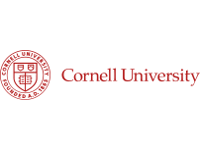
REU Research Descriptions
The Platform for the Accelerated Realization, Analysis, and Discovery of Interface Materials (PARADIM) is a national user facility at Cornell and Johns Hopkins Universities dedicated to the discovery and fabrication of materials with unprecedented properties that do not exist in nature. We are seeking REU interns interested in not only growing these new materials, but also in optimizing and improving the equipment used to grow and characterize them. Molecular-beam epitaxy (MBE) is a state-of-the-art thin film growth technique with atomic layer precision, and we have the world’s hottest MBE system in which materials discovery involving 62 elements of the periodic table occurs. Laser pedestal and high-pressure optical floating zone (FZ) are world leading bulk crystal growth capabilities. PARADIM also accesses the world's highest resolution electron microscope, which allows users to probe materials atom-by-atom. Electronic and structural properties are characterized at PARADIM using angle-resolved photoemission spectroscopy (ARPES) and x-ray diffraction (XRD). Specifically, oxide and intermetallic bulk crystalline and thin films for next generation electronics are being grown. PARADIM is also spearheading new data-rich artificial intelligence/machine learning techniques to improve materials discovery.
Project 1 (Thin Film, Cornell):
Growing New or Vastly Improved Materials with PARADIM Users. This project will involve observing the growth of new or vastly improved materials by MBE and learning to characterize them by x-ray diffraction, atomic-force microscopy, optical microscopy, and depending on the material other appropriate methods like resistivity vs. temperature or Hall effect measurements.
Project 2 (Thin Film, Cornell):
Improving the Hardware of PARADIM’s MBE+ARPES Capabilities. This project will involve making improvements, some of which may contribute to PARADIM IP, to integrated MBE+ARPES unique synthesis plus characterization system connected through an ultra-high vacuum system (UHV) and involve design work using either SolidWorks or AutoCAD.
Project 3 (Thin Film, Cornell):
Growth and Characterization of Oxide and Nitride Thin Films. This project will involve hands-on experience in optimizing the crystalline quality of epitaxial films of β-Ga2O3 and AlN by tuning the growth parameters and characterizing the resulting films with X-ray diffraction, Hall effect, and atomic force microscopy (AFM).
Project 4 (Thin Film, Cornell):
Advancing Materials Discovered in PARADIM’s Thin Film Facility toward Devices and Prototypes. This project involves translating the thin-film materials discoveries made in PARADIM toward devices and prototypes with the goal of generating IP for the Platform. Building and assessing devices may involve processing the materials grown in PARADIM in the Cornell NanoScale Science & Technology Facility (CNF) to pattern them into useful geometries and integrate them with other materials to make devices. This project involves materials characterization, device optimization, and testing to assess the potential of PARADIM materials with enhanced properties to make useful devices.
Project 5 (Microscopy, Cornell):
Probing Quantum Materials at the Atomic Scale. This project will involve working with the world's highest resolution microscope to study new quantum materials grown at PARADIM and involve using and developing Python based analysis code to extract key information from the large datasets generated during a typical STEM experiment.
Project 6 (Bulk Crystal Growth, JHU):
Advancing Material Synthesis in a National User Facility. This project will utilize the world-unique floating zone and data capabilities of PARADIM to carry out discoveries of materials relevant to industrially applicable quantum materials, particularly those materials necessary to build complex quantum devices exhibiting unparalleled electronic and magnetic behaviors.
Project 7 (Thin film/Microscopy/Bulk Crystal Growth, JHU):
Building the Materials Data Infrastructure. This project involves the design and implementation of a materials data infrastructure, to enable seamless collection and use of data from a range of experimental and theoretical techniques in materials synthesis to make data Findable, Accessible, Interoperable, and Reusable (FAIR).
Project 8 (Bulk Crystal Growth, JHU):
Improving floating zone and pedestal growth hardware. This project will involve the further development and implementation of PARADIM IP related to advanced material synthesis including closed loop autonomous methods and design work using either SolidWorks or AutoCAD.







